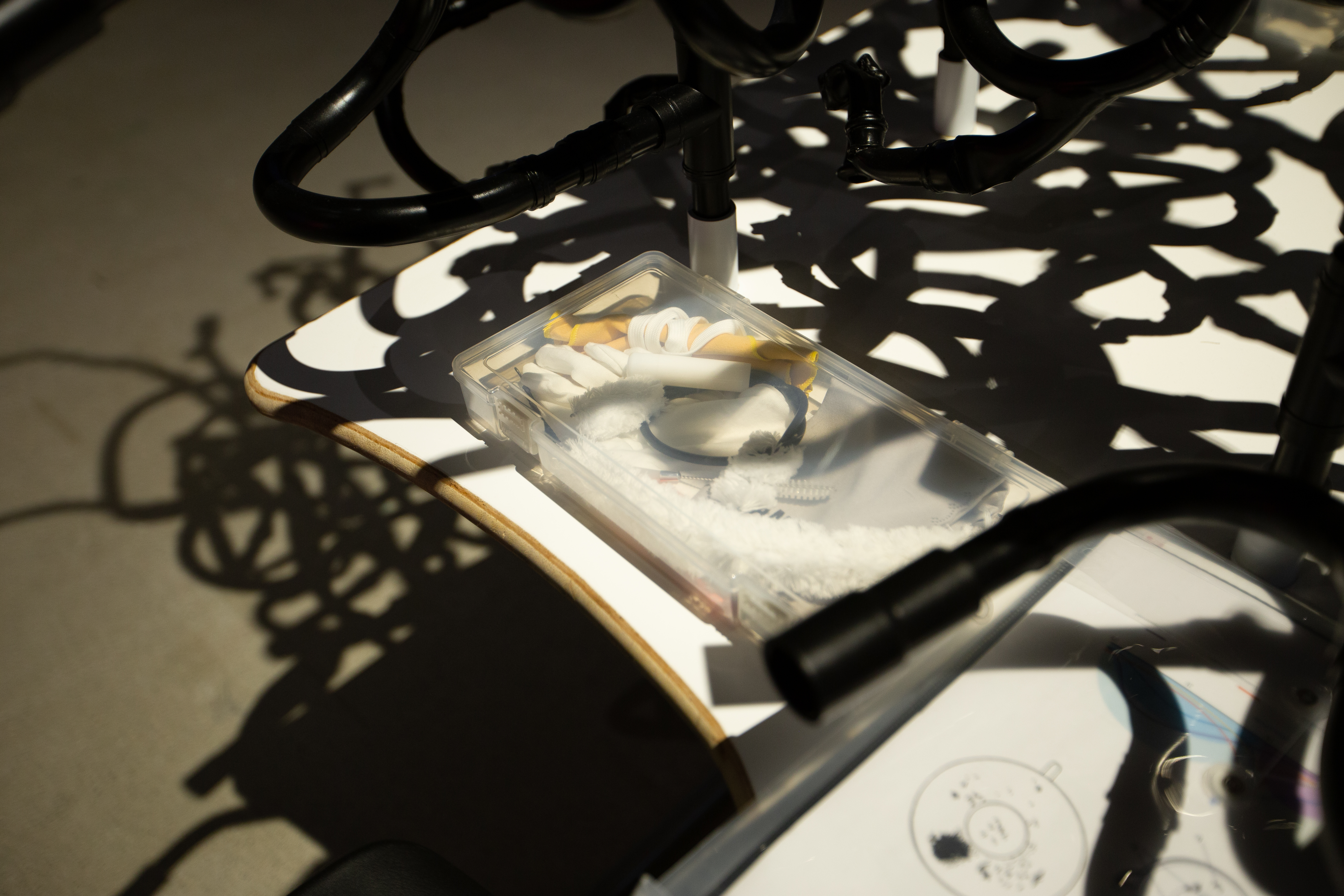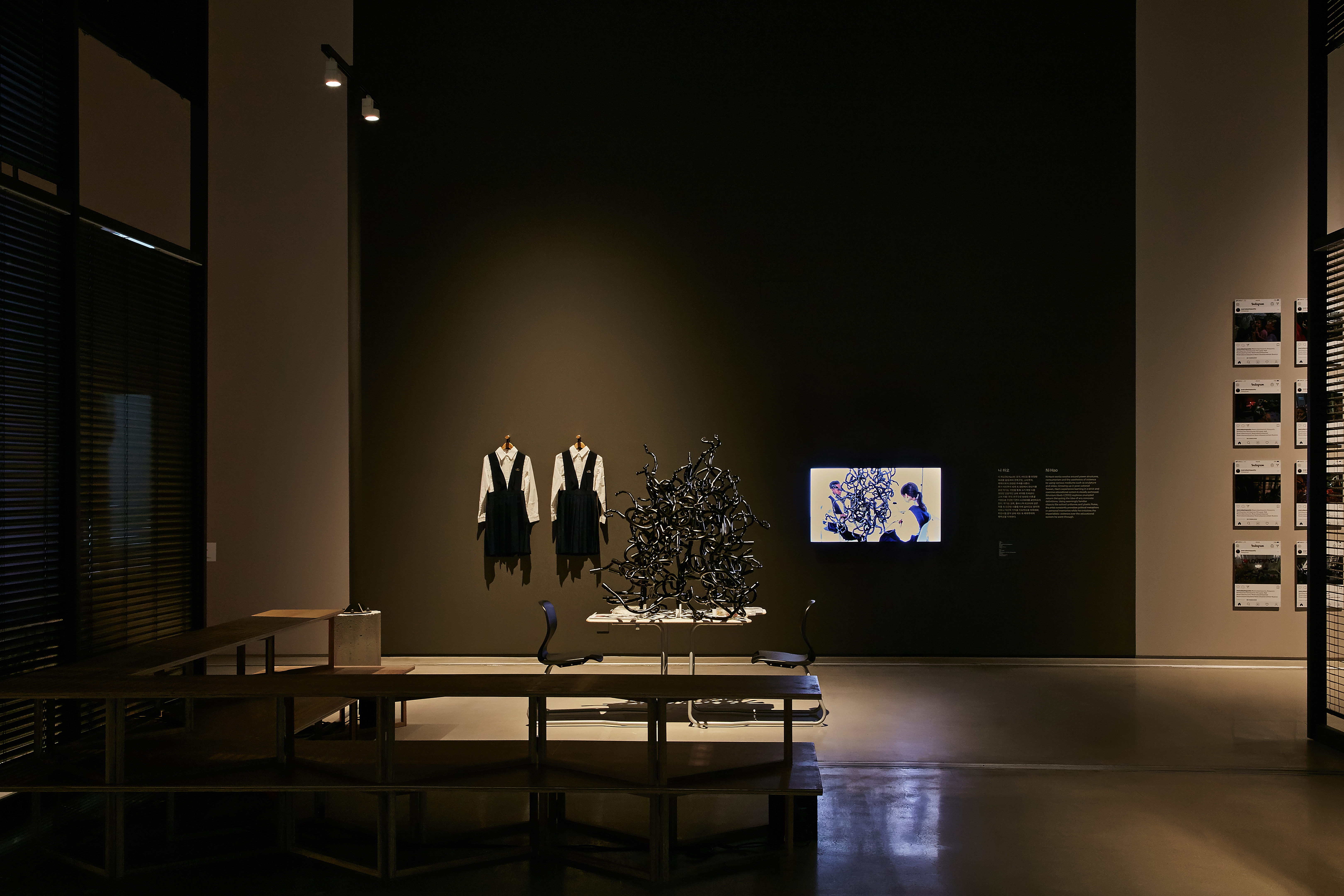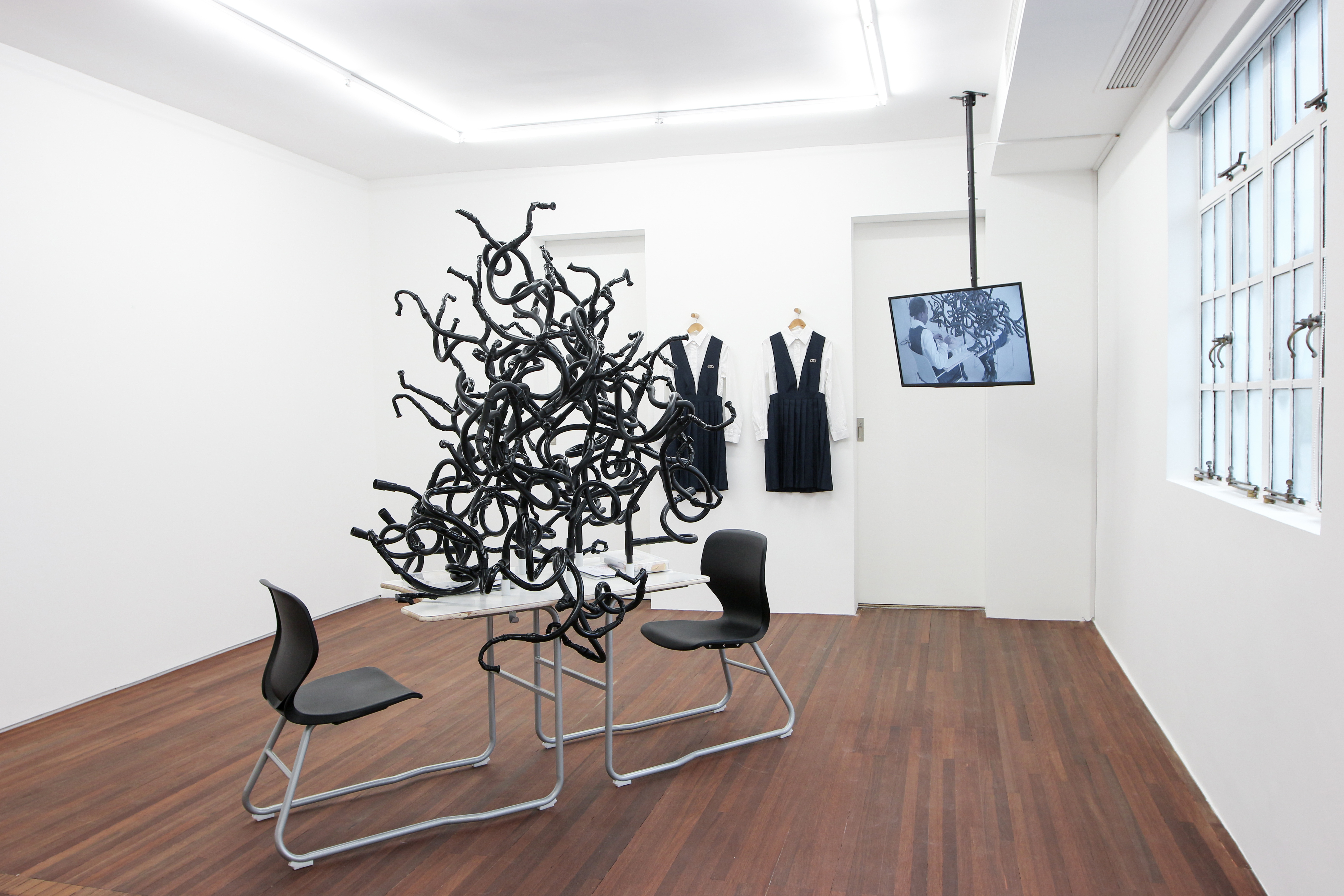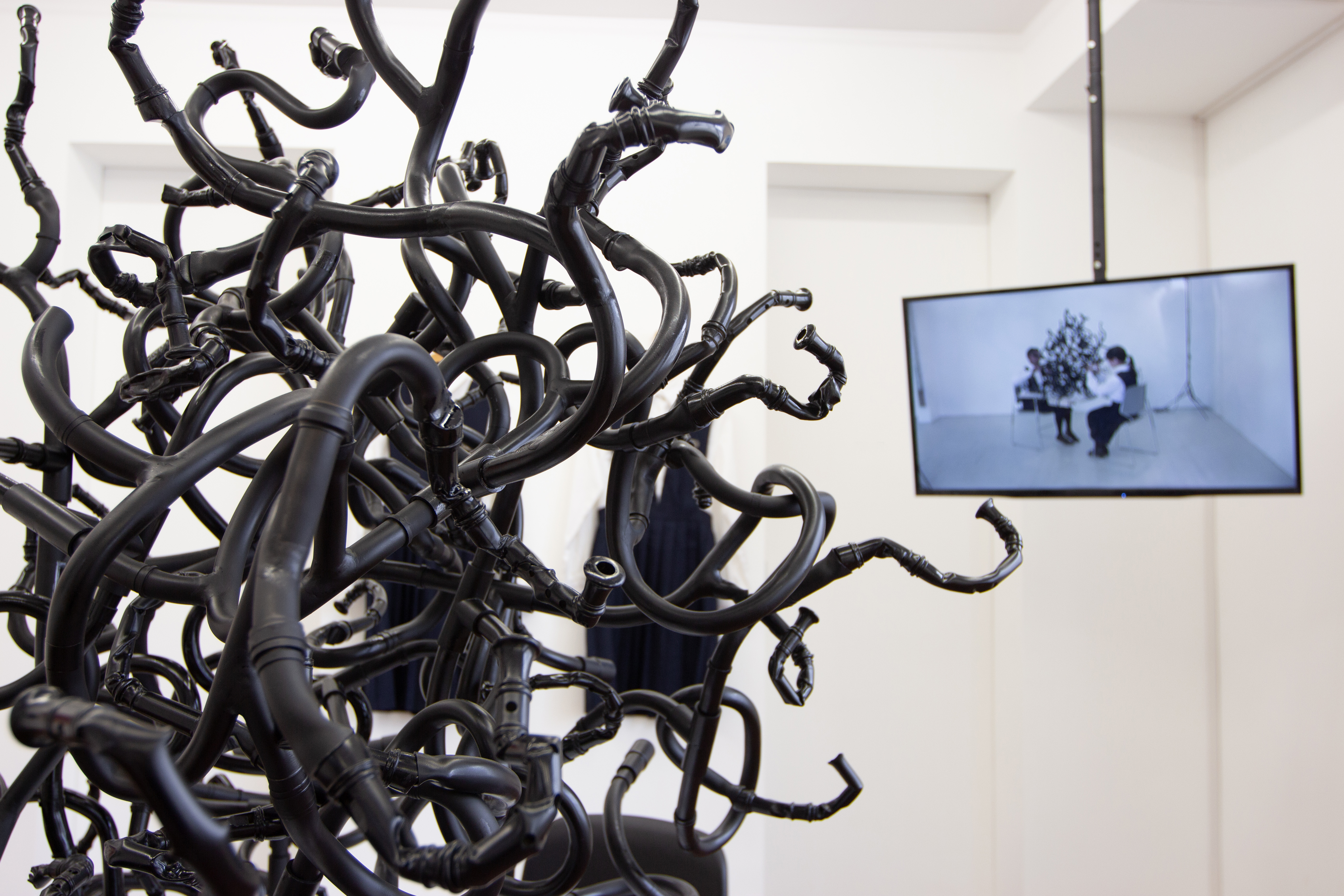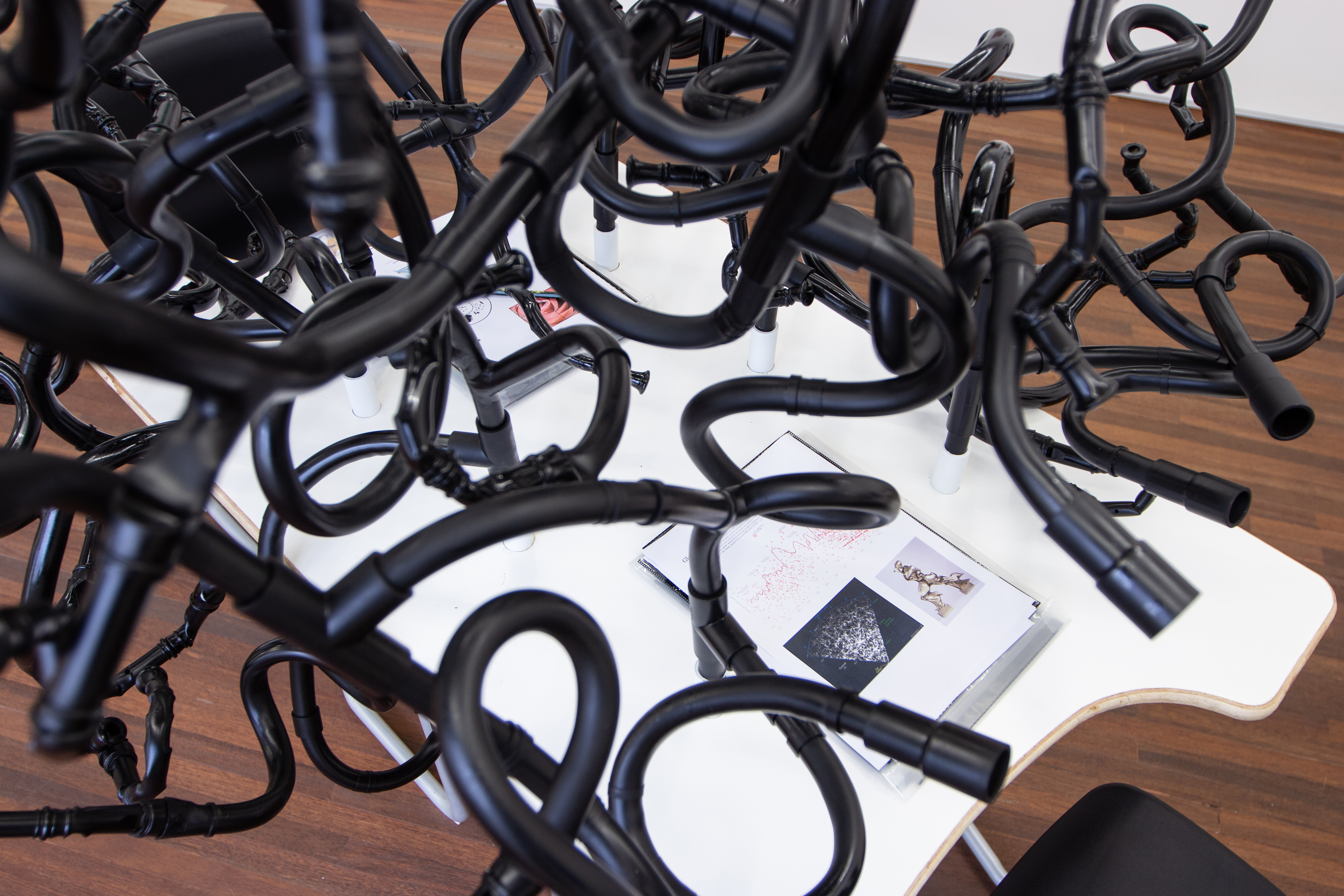Structure Study l
2012, (2020 remade)
Enamel paint on PVC pipes and ABS plastic on found chairs, performers in school uniform, translating and playing from musical scores made up of images, line charts and pie charts relating to current events.
sculpture approimately: 183 cm x 137 cm x 167.5 cm
Performance (Version I )
2012
Performers: Sophia Sobers, Katie Taylor
original Performance time: 9:00 minutes
Performance (Version II)
2022
Performers: Lin Tzu-Ning 林子寧, Yu Xin You 游育歆
Performance time approximately : 25:00 minutes
Revived from the Baroque era after some 150 plus years of hiatus , the recorder flute was mass-produced to fuel the Wandervogel German Youth Movement in the 20s and 30s. Young people hiked and camped throughout the countryside in order to retrace their heritage, reconnect with nature, and to get away from the corruption and pollution of the cities through dancing and folk songs. Soon after the Nazi party took power, the tremendous youthful energy from this movement was hijacked, and all the different youth groups were reduced down to just a single one: The Hitler Youth.
The recorder flute at this time became an even more important musical instrument for young people especially because of the Orff Schulwerk musical teaching method created by Carl Orff and Gunild Keetman, who ran the famous all-female Günther School in Munich training centre for gymnastics, dance, and music. The school was created based off the avant-garde concept from The Body Culture movement, where women believed that their freedom and power depended on the expressive capabilities of the body, emancipation included nudity in order to fully project their individual and collective identities.
The culmination of their work was the 1936 Berlin Olympic performance, when the Youth Orchestra of the Günther School performed recorder flutes en masse in the Schulwerk method alongside thousands of dancing children choreographed by the school. At this very moment, a Japanese student in the audience named Yoshitaka Sakamoto was deeply touched and inspired by the performance, so much so that in 1939 he took some recorder flutes back to Japan and petitioned Nihon Kangakki Company (later Yamaha Corporation) to manufacture the flutes for the Japanese children. After the World War II, Orff Schulwerk was rebranded as a teaching method for children instead of for young women, and from there it spread throughout the world.
經過 150 多年的中斷後,直笛從巴洛克時代再次被帶回和復興,為了20 年代和 30 年 Wandervogel 德國青年運動提供動力而被大量生產。在這次青年運動裡年輕人在鄉村田野間遠足和露營,以和自然重新聯繫來追尋他們的根,並通過舞蹈和民謠擺脫城市的政治腐敗和污染。納粹黨掌權後不久,這場運動的巨大青年能量被完全劫持,而所有不同的青年團體都被縮減成唯一一個希特勒青年團。
此時的直笛成為年輕人更加重要的樂器,特別是因為卡爾·奧敷和凱特曼創立的奧福音樂教學方法 (Orff Schulwerk),他們在慕尼黑經營著名的全女性根特舞蹈和音樂學校 (Güntherschule)。這所學校是根據當時德國前衛身體文化運動概念創建的,女性認為她們的自由和權力取決於身體的表達能力,以舞蹈和裸體方式等行為充分展示她們的個人和集體身份。
他們早期的成就高峰是 1936 年柏林奧運會的表演項目,當時 Günther 學校的青年管弦樂團與數千名孩童一起以奧福教學方法和由學校編排的舞蹈集體演奏直笛和跳舞。就在這時,台下一位名叫坂本喜孝的日本學生被演出深深地受到感動,以至於在 1939 年他帶了一些直笛回日本,並請日本管楽器株式会社 (後來的山葉株式會社) 製造日本兒童用的直笛。二戰後,Orff Schulwerk 被重新復興為針對兒童而非年輕女性的音樂教學法,並從那裡傳播到世界各地。



